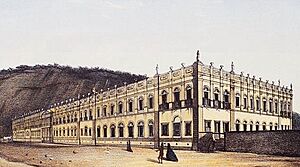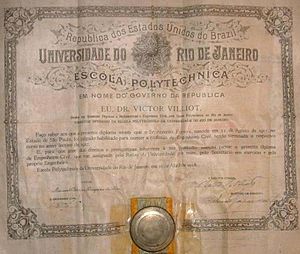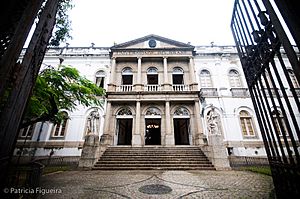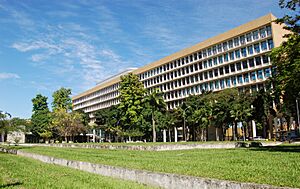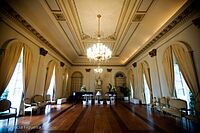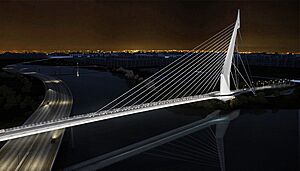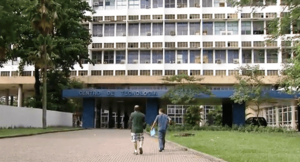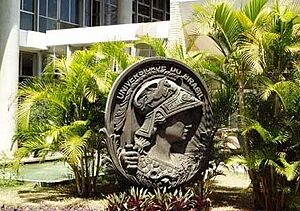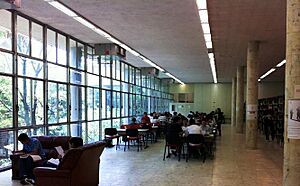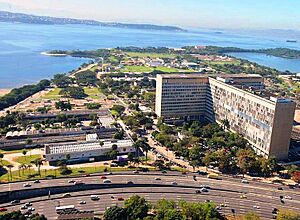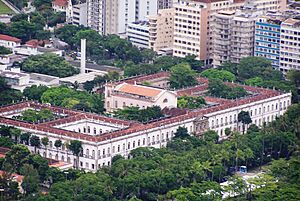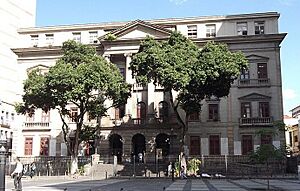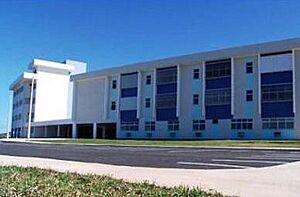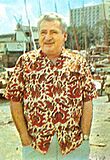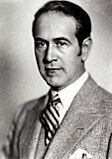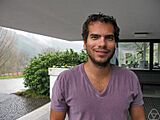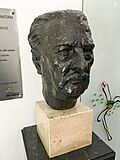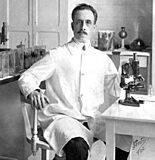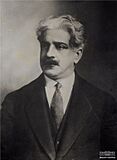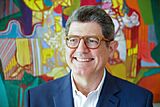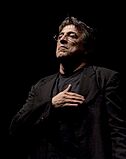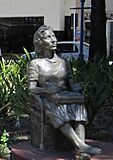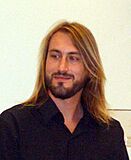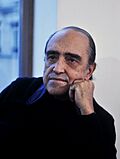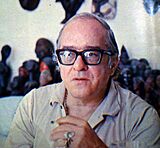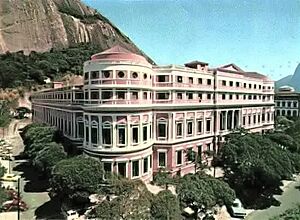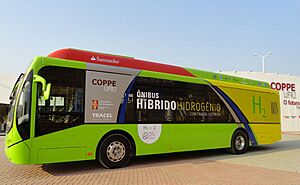Federal University of Rio de Janeiro facts for kids
|
Universidade Federal do Rio de Janeiro
|
|
 |
|
|
Other names
|
UFRJ |
|---|---|
| Motto | A Universidade do Brasil |
|
Motto in English
|
"The University of Brazil" |
| Type | Public research university |
| Established | December 16, 1792 (233 years) (Royal Academy) September 7, 1920 (105 years) (University) |
| Budget | R$3.8 billion (2020) |
| Rector | Roberto de Andrade Medronho |
|
Academic staff
|
4,218 (2021) |
|
Administrative staff
|
9,153 (2021) |
| Students | 69,200 (2021) |
| Undergraduates | 53,500 (2021) |
| Postgraduates | 15,700 (2021) |
| Location |
,
,
Brazil
22°51′45″S 43°13′26″W / 22.86250°S 43.22389°W |
| Campus | University town 2,338 acres (946 ha) (Main campus) 3 municipalities
|
| Colors | Yellow and White |
| Mascot | Minerva |
 |
|
The Federal University of Rio de Janeiro (UFRJ) is a large public university in Rio de Janeiro, Brazil. It is also known as the "University of Brazil." It is the biggest federal university in the country. UFRJ is famous for its excellent teaching and research.
This university is Brazil's first official higher education institution. It has been open since 1792. That's when the "Royal Academy of Artillery, Fortification and Design" was founded. This academy was the start of the university's current Polytechnic School. UFRJ officially became a university in 1920.
Today, UFRJ offers many courses. It has 157 undergraduate (first degree) and 580 postgraduate (advanced degree) programs. The university also runs seven museums, including the famous National Museum of Brazil. It has nine hospitals, hundreds of labs, and 43 libraries. UFRJ's history is deeply connected to Brazil's goal of becoming a modern and fair society.
The university's main locations are in Rio de Janeiro. It also has smaller campuses in other cities. Its main campuses are "Praia Vermelha" (Red Beach) and "Cidade Universitária" (University Town). University Town is home to the "Technology Park of Rio." This park is a hub for science, technology, and new ideas.
Many famous Brazilians studied at UFRJ. These include architects, writers, politicians, and doctors. They have all helped shape Brazil's history and future.
Contents
History of UFRJ
How the University Started
The Federal University of Rio de Janeiro comes from Brazil's very first higher education courses. It was officially created on September 7, 1920. This date is Brazil's Independence Day. President Epitácio Pessoa signed the law to create it. It was first called the "University of Rio de Janeiro."
However, its history goes back much further. Many of its courses started with the very first higher education in Brazil. When it began, the university included three main schools:
- The "Polytechnic School" started in 1792. It was first called the Royal Academy of Artillery, Fortification and Design.
- The "National College of Medicine" began in 1808.
- The "National College of Law" was formed in 1891.
Over time, more schools joined the university. These included the National School of Fine Arts and the National College of Philosophy. UFRJ played a key role in setting up higher education in Brazil. It became a model for many other universities in the country.
Changes and Growth
In 1937, the university changed its name to the "University of Brazil." This change happened during a big education reform. The government wanted to make sure all universities met high standards. This idea was inspired by French universities.
In the early 1950s, UFRJ started focusing more on research. It created research institutes and hired full-time professors. It also began working with national and international groups to get funding for research.
In 1958, the university celebrated 150 years of its Medicine School. This led to big discussions about how to improve the university. They wanted professors and students to be more involved. They also wanted to use public money more wisely. These ideas helped shape how universities were planned across Brazil.
In 1965, the university gained more freedom. It became "autarchic," meaning it could manage its own money and academic decisions. It also got its current name: Federal University of Rio de Janeiro. This name followed a new rule for federal universities.
UFRJ Today
UFRJ welcomes international students and experts. It also encourages its staff to work in other institutions around the world. This helps the university stay modern while keeping its strong traditions.
The university's mascot is Minerva, a Roman goddess. She represents arts, knowledge, and intelligence. You can see many statues of Minerva around the campus. In 2000, the university tried to change its name back to "University of Brazil." This was because the name was changed during a time of military rule. The request was approved, so both names are correct.
UFRJ also has programs to help people who are not students. These programs offer full-time education to those who need financial help. The university's nine hospitals also provide a lot of public health care in Rio de Janeiro. They offer many hospital beds and work closely with the state's health system.
In 2010, UFRJ received a top rating from the Ministry of Education. This shows its strong focus on research and teaching. As one famous scientist, Carlos Chagas Filho, said: "In a university, one teaches because one researches."
How UFRJ is Organized
UFRJ is a public institution connected to the Ministry of Education. It is managed by several important councils. The University Council is the highest authority. It is led by the "rector," who is like the university president. Other councils handle finances, undergraduate studies, and postgraduate research.
The university also has a vice-rector and six other pro-rectors. Rectors are chosen every four years. The Ministry of Education usually picks the candidate with the most votes from a general election.
Important Leaders
Many important people have been rectors of UFRJ. These include doctors, politicians, and economists. For example, Benjamin Franklin Ramiz Galvão was the first rector. Pedro Calmon was a former Minister of Education. Carlos Lessa was a well-known economist.
Facts and Figures
In 2013, UFRJ had 52 main units and departments. These were part of six academic centers. It had over 48,000 undergraduate students. About 7,300 students were taking online courses. Each year, over 5,000 students graduated.
For advanced studies, there were over 5,300 master's students. There were also over 5,500 students working on their doctorates. Out of its 3,821 professors, most had a doctorate degree. The university's high school unit had 760 students.
Most of the university's buildings are in "Cidade Universitária" (College City). This campus is on "Ilha do Fundão" (Backyard Island). The "Praia Vermelha" (Red Beach) campus also has many units. Other buildings are spread across Rio de Janeiro. These include the National Museum and several health buildings. UFRJ also has campuses in other cities like Macaé and Duque de Caxias.
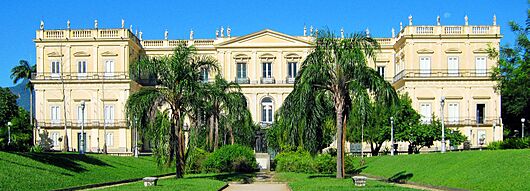
University Structure
UFRJ is divided into six main university centers. It also has a Technical Department, a Science and Culture Forum, and the University City Hall. Each center has many units and departments. These are responsible for teaching, research, and outreach in their specific fields.
University Centers
- Center of Health Sciences (CCS): This is the largest center. It focuses on biosciences, health, and research. It has ten units and fourteen departments, including hospitals and schools.
- Center of Technology (CT): This is the second largest center. It manages two engineering schools and two high-tech research institutes. It also has business incubators.
- Center of Mathematical and Natural Sciences (CCMN): This center grew from the National School of Philosophy. It has five institutes and an observatory. It offers the only federal astronomy course in Brazil.
- Center of Law and Economic Sciences (CCJE): This center deals with applied social sciences. These include administration, economics, and law.
- Center of Philosophy and Human Sciences (CFHC): This center focuses on social sciences and how society is formed. It has six units and two departments.
- Center of Literature and Arts (CLA): This center was founded in 1967. It includes schools and colleges for arts, language, and architecture.
- COPPEAD Graduate School of Business: This business school was founded in 1973. It is the only one from a Brazilian public university with international certification. It is also listed among the top 100 in the world.
Libraries and Museums
UFRJ's libraries and museums hold important historical documents. They are a key resource for researchers in Brazil. In 1983, the university created a system to easily access its 43 libraries.
One of the most famous museums is the National Museum of Brazil. It is the largest museum of natural history and anthropology in Latin America. It is also Brazil's oldest scientific institution. The museum building was once the palace of the Brazilian Imperial Family. Emperor Dom Pedro II, who loved science, added many items to its collection.
The university also manages the "Casa da Ciência" (House of Science) in Botafogo. This science and technology center opened in 1995. It explores different ways to share science, like theater and music. It holds workshops and exhibits for students and the public.
Health Services
The university has a large medical and hospital network. It includes nine hospitals and health centers. Together, these units provide hundreds of thousands of treatments each year. They also perform thousands of surgeries and hospitalizations.
- Clementino Fraga Filho University Hospital (HUCFF): This is UFRJ's main medical hospital. It is a national and international leader in complex surgeries.
- São Francisco de Assis Institute of Health (HESFA): This institute focuses on long-term care for patients.
- Institute of Psychiatry (IPUB): This is a leading center in Latin America for studying psychiatry and mental health.
- Martagão Gesteira Institute of Childcare and Pediatrics (IPPMG): This institute is known nationwide for childcare. It researches and teaches about children's health.
- Institute of Chest Diseases (IDT): This institute focuses on research and care for respiratory illnesses.
- Deolindo Couto Institute of Neurology (INDC): This institute works on neurology and neurosurgery.
- Institute of Gynecology (IG): This institute provides special services for gynecology.
- Edson Saad Institute of Heart (ICES): This institute develops high-quality research in cardiology and vascular surgery.
- Maternity School (ME): This school was founded in 1904 to help pregnant women and newborns. It was a pioneer in using new medical methods in Brazil.
University Campuses
Rio de Janeiro Campuses
The main campus of UFRJ is College City. It is located on Ilha do Fundão (Backyard Island) in northern Rio de Janeiro. This island was created artificially in the 1950s. Academic activities started here in 1970. The buildings have a modern design, and some have won awards.
The campus has student housing, restaurants, and a sports center. In 2010, a new transport station opened. It connects to many free bus lines for students. These buses link College City to other parts of Rio.
The Praia Vermelha (Red Beach) campus is in southern Rio. It focuses on human sciences. Its most famous building is the University Palace. This beautiful building was built in the 1800s as a hospice. In 1949, it became part of the University of Brazil.
In downtown Rio, there are several other university units. These include the College of Law Studies, the School of Music, and the Valongo Observatory.
There was a plan to move most academic activities from Praia Vermelha to College City. This would centralize all university activities on Ilha do Fundão. This plan caused some debate because of the long distances and traffic in Rio. To help with traffic, the "Ponte do Saber" (Knowledge Bridge) was built. It opened in 2012.
Duque de Caxias Campus
UFRJ started activities in Xerém, Duque de Caxias, in 2008. This area has a lot of industry and technology. The university partnered with the National Institute of Metrics to offer courses here. The Xerém campus now offers undergraduate courses in biophysics, biotechnology, and nanotechnology. It also has a master's program for biology teachers. Students can use the labs at the National Institute. In 2012, the Xerém campus became a full UFRJ campus.
Macaé Campus
UFRJ has been active in Macaé since the 1980s. Researchers studied lakes in the region. In 1994, UFRJ and the city created the Macaé Nucleus for Ecological Researches (NUPEM). The university's importance grew, and in 2012, the city donated land for a new university center.
In 2006, UFRJ started its first course outside Rio de Janeiro in Macaé. In 2007, a full university complex opened there. It has buildings for undergraduate, postgraduate, and outreach courses.
Today, the Macaé campus has four locations. It offers many undergraduate courses, including biological sciences, nursing, and engineering. It also has two postgraduate courses. The main campus was named after former rector Aloísio Teixeira in 2012. This honored his work in expanding UFRJ across the state.
Online Learning Centers
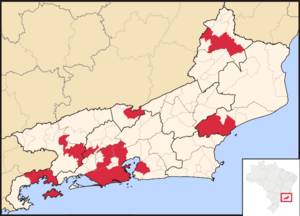
UFRJ offers online courses through a group called CEDERJ. This group includes UFRJ and other universities in Rio de Janeiro. These courses combine online learning with some in-person activities. UFRJ offers online teacher training courses in biosciences, physics, and chemistry. Students get the same certificate as those who study on campus.
UFRJ has online learning centers in many cities in Rio de Janeiro state. These include Angra dos Reis, Duque de Caxias, and Macaé.
Academics at UFRJ
Undergraduate Courses
UFRJ offers 179 undergraduate courses. These cover all areas of knowledge. Courses are offered in the morning, afternoon, night, or all day. Each course is linked to an academic institution. Some courses, like nanotechnology, are offered by several institutions.
Here are some of the areas of study:
|
Astrophysics
Computational astronomy Instrumental astronomy Mathematical astronomy Diffusion of astronomy
Analyst decision support
Remote sensing and gis Earth sciences and natural heritage
Economic engineering
Production Management
Computational mathematics
Mathematical statistics Scientific computing
Mathematics for business Math for biological sciences
|
Financial accounting
Management accounting business
Choreography and interpretation
Dance, and image creation
Defence and strategic affairs
National and regional security strategy for development International health and global environmental issues Visual communication
Product project Public sector management
Management of the third sector Teaching magisterium normal course
Teaching early childhood education Elementary school teaching
|
Postgraduate Courses
UFRJ offers 345 postgraduate courses. These include 167 specialization courses and 178 master's and doctorate degrees. Each course is linked to a specific academic institution. In 2010, many scholarship programs were available for postgraduate students.
Becoming a Student at UFRJ
Admissions Process
Like most public universities in Brazil, getting into UFRJ is very competitive. Students take entrance exams every year. These exams are known as "vestibular" in Brazil. Anyone who has finished high school can apply for undergraduate courses. Students can also transfer from other universities.
Until the late 1980s, a foundation called Cesgranrio managed the admission exam. UFRJ disagreed with the test's format, which was mostly multiple-choice. So, the university created its own exam. This test had only open-ended questions. It became known as one of Brazil's toughest admission exams.
Since 2012, UFRJ has used the "Exame Nacional do Ensino Médio" (High School National Exam, or ENEM) for admissions. This is a nationwide exam managed by the Ministry of Education. In 2011, UFRJ stopped using its own exam. ENEM became the only admission test. Student selection is now done through the "Sistema de Seleção Unificada" (Unified Selection System, or SiSU). UFRJ quickly became one of the most popular universities in this system. In 2012, it received the most applications of any university in SiSU.
UFRJ also has policies to help students from certain backgrounds. Since 2010, 30% of all spots are reserved for these students. This often helps students from public schools. It also helps those whose families earn less than a certain amount of money.
Famous Alumni
UFRJ has educated many bright minds in various fields. Here are some of them:
- Architect: Oscar Niemeyer
- Artists: Ary Barroso, Vinícius de Moraes, Ivan Lins
- Doctors: Vital Brazil, Carlos Chagas, Oswaldo Cruz, Carlos Chagas Filho
- Economists: Carlos Lessa, Joaquim Levy
- Educator: Anísio Teixeira
- Engineers: Benjamin Constant, Maria das Graças Foster
- Journalists: Fátima Bernardes
- Mathematicians: Artur Avila, Jacob Palis
- Politicians: Oswaldo Aranha, Carlos Lacerda
- Writers: Jorge Amado, Clarice Lispector, Leandro Müller
- Notable UFRJ Alumni
-
Jorge Amado, writer
-
Vital Brazil, physician and scientist
-
Carlos Chagas, doctor
-
Oswaldo Cruz, physician and public health officer
-
Ivan Lins, musician
-
Clarice Lispector, writer
-
Oscar Niemeyer, architect
-
Vinícius de Moraes, writer and diplomat
Student Groups
Students at UFRJ are represented by the "Mário Prata Central Student Directory" (DCE). It was founded in 1930. The DCE was very important until it was shut down by the military government from 1964 to 1985. Many student leaders were killed during this time. In the late 1970s, the DCE was allowed to reopen.
To the young students who, at dawn of September 23rd, 1968, in the National College of Medicine building, dared to resist the police forces of the military regime. The episode known as "Massacre da Praia Vermelha" is one of the most important events of the constant fight for academic autonomy. To them, our deepest admiration.
Besides the DCE, smaller student groups represent students for each course. For example, there is the Carlos Chagas Academic Center for the College of Medicine.
A sad event in student history is the "Massacre da Praia Vermelha" (Red Beach Massacre). On September 23, 1968, military police attacked the old College of Medicine building. They beat students and destroyed labs. About 600 students were protesting against the government's actions. They wanted the release of a law student who had been arrested.
Rio Technology Park
The Rio Technology Park is also in College City. It is a hub for research in energy, oil, and gas. UFRJ is working with Petrobras, a big oil company. They want to make a 350,000 square meter area into the world's largest oil research center. This is important for finding new ways to get oil from deep underground.
This park has attracted a lot of investment. It is sometimes called a Brazilian "Silicon Valley" because of its focus on innovation. Key facilities in the park include:
- Leopoldo Américo Miguez de Mello Research Center (CENPES): This is Petrobras's research center. It is the largest oil research center in the southern hemisphere.
- Electric Energy Research Center (CEPEL): This center researches how to generate and distribute electric energy. It is the largest in its field in the hemisphere.
- Mineral Technology Center (CETEM): This center works on developing technology for minerals.
- General Electric Global Technological Center (GE): This center focuses on global technology.
- Alberto Luiz Coimbra Institute of Post-Graduation and Research in Engineering (COPPE): This is UFRJ's engineering research center. It has the world's largest and deepest oceanic tank. This tank is used to simulate ocean conditions.
Many other companies also have research units in the park. These include L'Oréal, Siemens, and Schlumberger. The park project has also brought over 200 smaller companies to the area.
University Projects
UFRJ Newspaper
The "Jornal da UFRJ" (UFRJ Newspaper) is published every month. It covers academic news and university affairs. It is available in print and online. About 25,000 copies are given out across the campuses.
UFRJ Sea Project
The "UFRJ Mar" (UFRJ Sea) project works along Rio de Janeiro's coast. It involves many fields, from physical education to engineering. This project has some of Brazil's most advanced labs for studying the ocean and coast.
Getting to Know UFRJ
"Conhecendo a UFRJ" (Getting to Know UFRJ) is a yearly event. It takes place at College City over two days. High school students can learn about the university. They tour the campus and learn about student life. In 2010, about 14,000 students attended this event.
Wave Power Plant
COPPE developed a project to create electricity from sea waves. This "Plant Waves" project is the first in Latin America. It uses 100% Brazilian technology. This puts Brazil among a select group of countries that can get electricity from ocean waves.
MagLev Cobra Train
The Maglev Cobra is a special train developed at UFRJ. It floats above the tracks using magnets. This means it has almost no friction. The train is designed to be a high-tech, clean, and energy-efficient way to travel. It is also more affordable than a subway system. Its normal speed is between 70 and 100 km/h.
LabOceano
LabOceano is a huge ocean tank. It can copy conditions found deep in the ocean. This is very important for Brazil, as most of its oil is found deep at sea. The tank holds 23 million liters of water. It is as tall as an eight-story building. Only two other facilities in the world have similar features.
Important Institutions
- Law School
- Museu Nacional (National Museum)
- Casa da Ciência (House of Science)
- CAp UFRJ (Laboratory School)
See also
 In Spanish: Universidad Federal de Río de Janeiro para niños
In Spanish: Universidad Federal de Río de Janeiro para niños
- Brazil University Rankings
- Education in Brazil
- List of federal universities of Brazil
- Universities and Higher Education in Brazil


